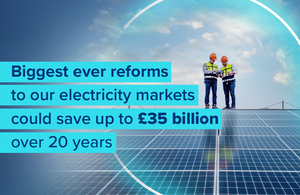The Government’s Review of electricity market arrangements (REMA), now entering its second consultation, seeks to address significant irregularities and inefficiencies in the energy market.
Although nearly all parties agree that the current system is flawed, there is debate on how the market can be changed, with certain options potentially doing more harm than good, according to some associations. Others are more enthusiastic.
In particular localised, or zonal, pricing is a thorny issue, with Greg Jackson, CEO of Octopus Energy, saying: “Our ridiculously distorted energy market forces us to send electricity to France when we need it most and pay a premium to buy it back from Norway, all while paying Scottish wind farms to switch off.
“With locational pricing, customers will save hundreds of pounds a year on bills and parts of the UK will see the lowest electricity prices in Europe, attracting new industry and reducing the need for new pylons. It’s right that the government is progressing zonal pricing and the energy sector must now work together to get this up and running swiftly so we can attract new industries - from data centres to manufacturing - and customers can benefit from cheaper electricity fast.”
RenewableUK and SolarEnergyUK have stated: “One of the measures on the table is a move to zonal pricing, which would divide the wholesale electricity market into zones with different prices. Although it is positive to see that this consultation now discards the earlier option of moving to a nodal pricing system (with the price set at hundreds of nodes across the transmission system), we remain sceptical about the claimed benefits of a zonal system.
“Zonal would introduce additional uncertainty into the market, raising the cost of capital for renewable energy at a time when we need to deploy around 10GW of renewable electricity generation capacity each year until 2035 to meet our targets and deliver a lowest cost clean energy system for billpayers.”
The consultation on REMA closes on 7 May 2024.
Latest News
-
Trump effect leads to slump in European ESG investment
-
Skipton Building Society names Refuge as its next charity partner
-
Voices of children impacted by hygiene poverty to be played at shopping centre toilets
-
Corporate partners wanted for rebranded environmental match funding campaign
-
Building Society hands domestic abuse survivors’ charity £150,000
-
Coffee firm links up with National Park to create ‘haven for biodiversity’
© 2019 Perspective Publishing Privacy & Cookies









Recent Stories